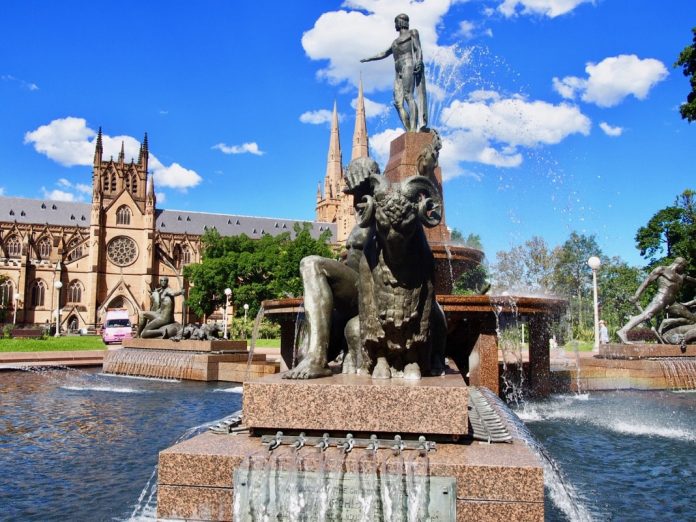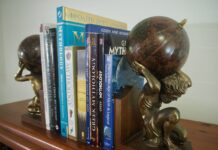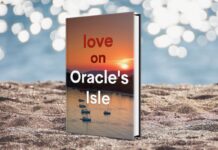The incredible Archibald Fountain in Sydney shows an impressive statue of Apollo, the Greek God of music.
The impressive Australian water fountain pays tribute to Greek mythology.
It is one of the best attractions in Sydney, so you should know more about it.
The Archibald Fountain is in a popular urban park known as Hyde Park in the Sydney CBD.
It is located in a peaceful touristy spot in a beautiful part of Sydney.
Apollo is standing high in the middle of the Archibald Fountain in Hyde Park with water spraying behind him in the shape of a fan.
Making up the Archibald Fountain is a collection of Greek God bronze statues.
One statue is dedicated to Apollo, the God of light, while another shows Artemis (Diana), Apollo’s twin sister.
Interestingly, the water fountain also has bronze statues showing Theseus slaying the Minotaur.
So yep, the monstrous half-bull half-man is in Australia in open space and no longer confined to a labyrinth in Greece.
As you can see, Apollo and the Minotaur don’t seem to mix, but here they exist in the same water fountain.
And then you have Pan symbolism sculptures as part of the Archibald Fountain.
Many water fountains worldwide have a Greek God or Goddess, but they’re much harder to find when Greek Gods and unrelated Greek myths join forces.
I think the Archibald Fountain would have to be Australia’s most beautiful water fountain.
It is a potent reminder of Greek mythology, proving Australia does have a classical side.
Once you’ve seen the Apollo fountain in more detail, I’m sure you’ll become a massive fan of the Archibald Fountain.
As soon as I arrived in Hyde Park, after walking down the road from the Art Gallery of New South Wales to get there, I took this photo at the Archibald Fountain.
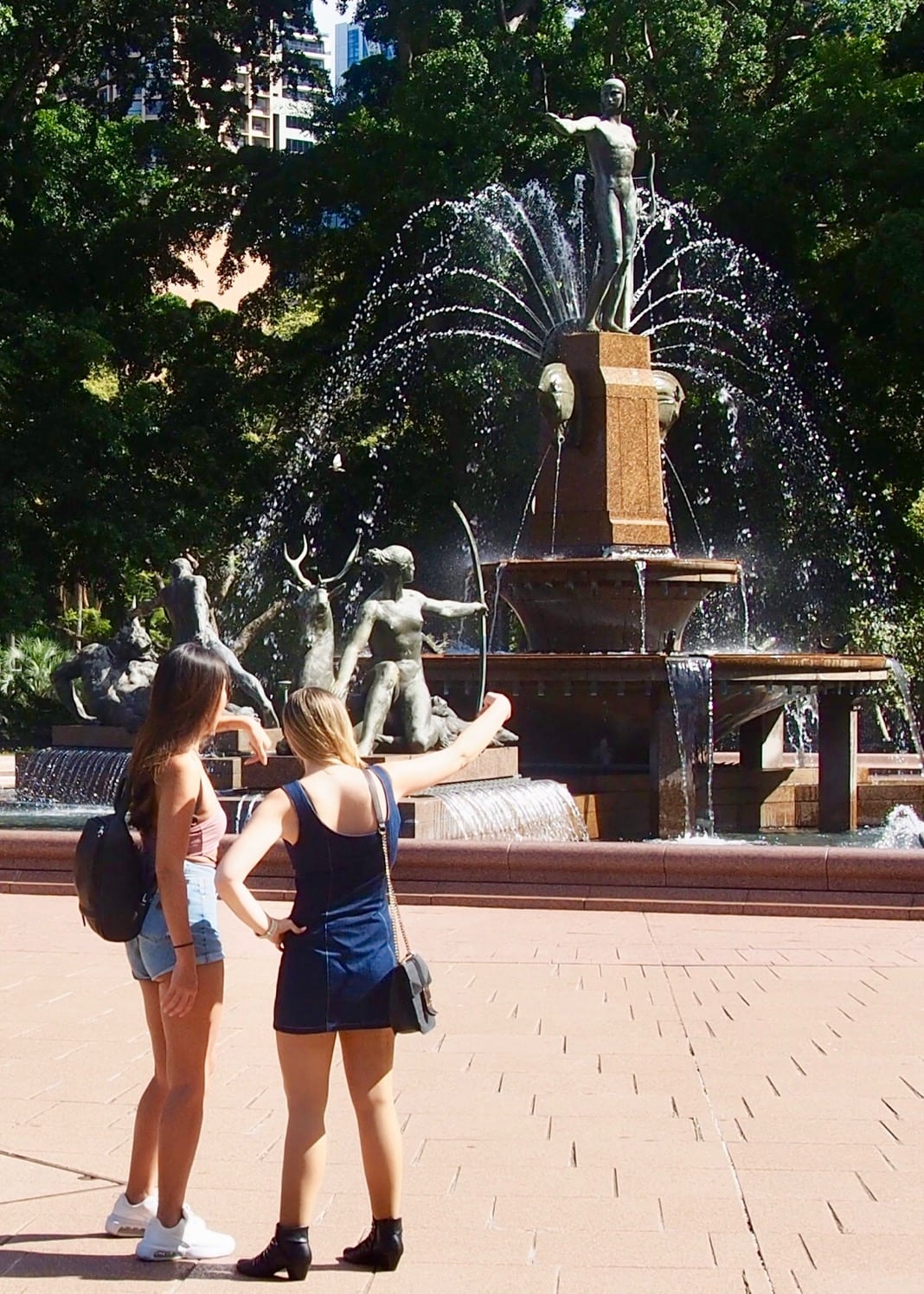
Apollo sure does know how to attract the girls.
The Archibald Fountain and Apollo
The Archibald Fountain featuring Apollo has to be one of the best water fountains in the world.
Apollo, the God of light, can be seen standing in the highest position in the center of the Archibald Fountain.
Greek God Apollo has one arm outstretched. In the other arm, he’s holding his most prized musical instrument, the lyre.
It’s a nice touch since Apollo is the Greek God of music.
Following a Y-shape around Apollo, you’ll also see three other linkages to Greek mythology within the Archibald Fountain. These sculptures all appear in the large basin.
You can see Apollo in other locations around Australia. That said, the Archibald Fountain has to have the most famous sculpture of Apollo in Australia.
An impressive golden statue of Apollo is inside one of the museums in Adelaide with Greek art. However, it does not compare to Apollo in the Archibald Fountain at Hyde Park.
Sculptures, monuments, and fountains honoring Greek mythology in Australia can be pretty impressive, but when tossing them up, the Archibald Fountain would have to be the best of the best.
That’s why you need to visit the Archibald Fountain when in Sydney.
Visiting this fantastic water fountain possessing multiple Greek mythology themes will leave a long-lasting impression.
Diana statue in the Archibald Fountain
Diana (Artemis), huntress and the twin sister of Apollo, is another magnificent sculpture that makes up a Y-branch of the water fountain.
Artemis is associated with the moon, whereas Apollo is associated with the sun.
They’re like Yin-Yang, so seeing them together within the same magnificent fountain is excellent.
The Greek Goddess Artemis, known as Diana to the Romans, is seen holding her bow next to a deer and a couple of hunting dogs.
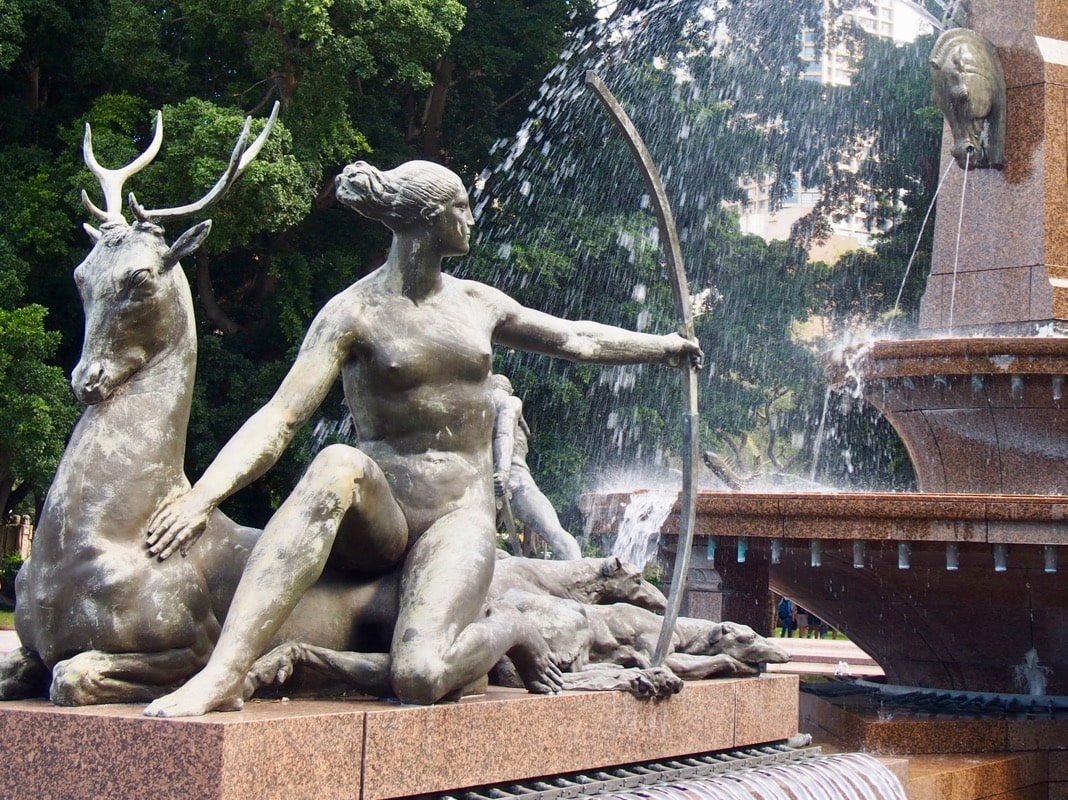
Apollo is very close to his sister, which suggests strong family bonds.
Similarly, France and Australia would have made strong connections during World War 1.
If not, this water fountain most likely would never have been made since the main reason for its creation was as a memorial for the sacrifices made during World War 1.
Why is it called the Archibald Fountain?
Some people call this magnificent water feature the Apollo fountain, but its proper name is the J. F. Archibald Memorial Fountain.
J. F. Archibald (1856-1919) was the founder, owner, and editor of The Bulletin magazine.
It is the same magazine where Norman Lindsay worked as an illustrator. The Norman Lindsay Gallery in the Blue Mountains is another fantastic place to visit if you have time when staying in Sydney.
One of the big reasons to go there is to see Norman Lindsay’s seahorse fountain.
Going on a day trip to the Blue Mountains will be required, but it is worth it.
The Bulletin magazine covered topics from politics to racist propaganda and bush culture. It mainly appealed to white folk. Looking back, some of the writings and cartoons seemed very racist.
It was published between 1880 to 2008, making it one of Australia’s longest-running magazines. During those times, the magazine changed track numerous times.
By the time Archibald died in 1919, he had left a substantial amount of money in his will to build a fantastic fountain for the cultural benefit of Australia.
Reason for building the Archibald Fountain
One of the things Archibald stipulated in his will was that the fountain had to be created by a French artist.
François-Léon Sicard became the artist and worked on it in Paris. When the fountain was complete, it was then shipped to Australia.
J. F. Archibald gave the cultural gift of the fountain to the people of Australia to help commemorate joint efforts between Australian and French troops in the First World War (1914 – 1918).
It was inaugurated on the 14th of March 1932 in Hyde Park, Sydney, only five days before the opening of the Sydney Harbour Bridge.
Now I can see why. People wanted Apollo in Australia. It makes perfect sense!
The Archibald Prize
Archibald was also responsible for creating one of Australia’s most outstanding art awards.
The Archibald Prize is a yearly prize with a significant financial benefit given to the winning painter of a portraiture painting.
As a result, many famous Australians have been painted over the years, from musicians to sporting heroes and political figures.
Theseus slaying the Minotaur sculpture
Another Y-branch of the Archibald Fountain has a solid reminder of one of the most famous Greek myths of all time. That of Theseus and the Minotaur.
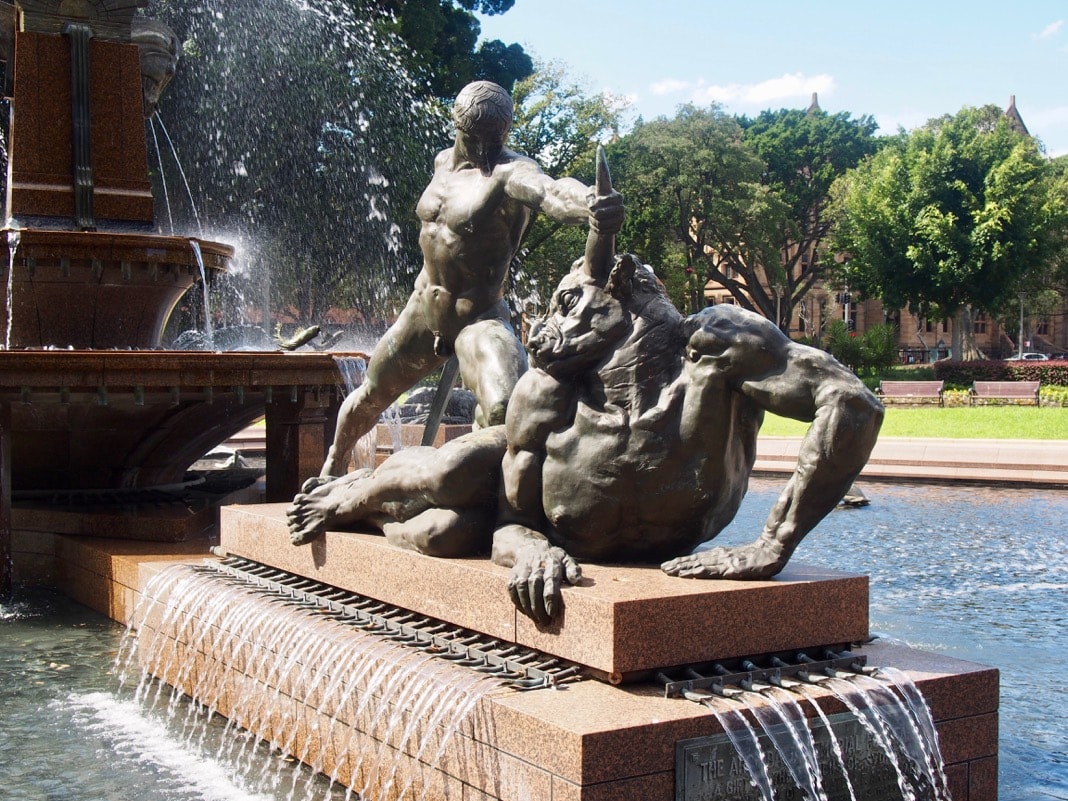
The Greek hero Theseus is seen holding one of the horns of the half-man half-bull monster.
Theseus has a sword in his other hand. It presumably shows the moment just before Theseus is about to slay the monstrous Minotaur beast.
Coming across Theseus and the Minotaur in the Archibald Fountain for the first time is incredible.
It is one of the biggest surprises in the Archibald Fountain because it almost seems out of place.
Then again, in this ancient Greek myth, the hero Theseus killed the Minotaur and ended the terror that the Athenians continually faced.
The myth has many noble qualities, such as sacrificing for the greater good.
Assisting someone to escape and hopefully ending a hellish tyranny is probably the symbolic meaning behind it.
In Greek mythology, the hell hole was the Minotaur’s labyrinth. So naturally, no one wanted to be in the labyrinth with the Minotaur, but in reality, it could easily symbolize other life-threatening ordeals, such as War.
Pan Group of Sculptures
Then there’s a Pan group of sculptures in another Y-branch of the water fountain.
These pieces most likely symbolize Australia’s friendliness towards Pan, the nature god from Greek mythology, with goat-like features.
The Pan group of sculptures possibly represents a friendly hope that nature and harvests would be on the side of the people of Australia.
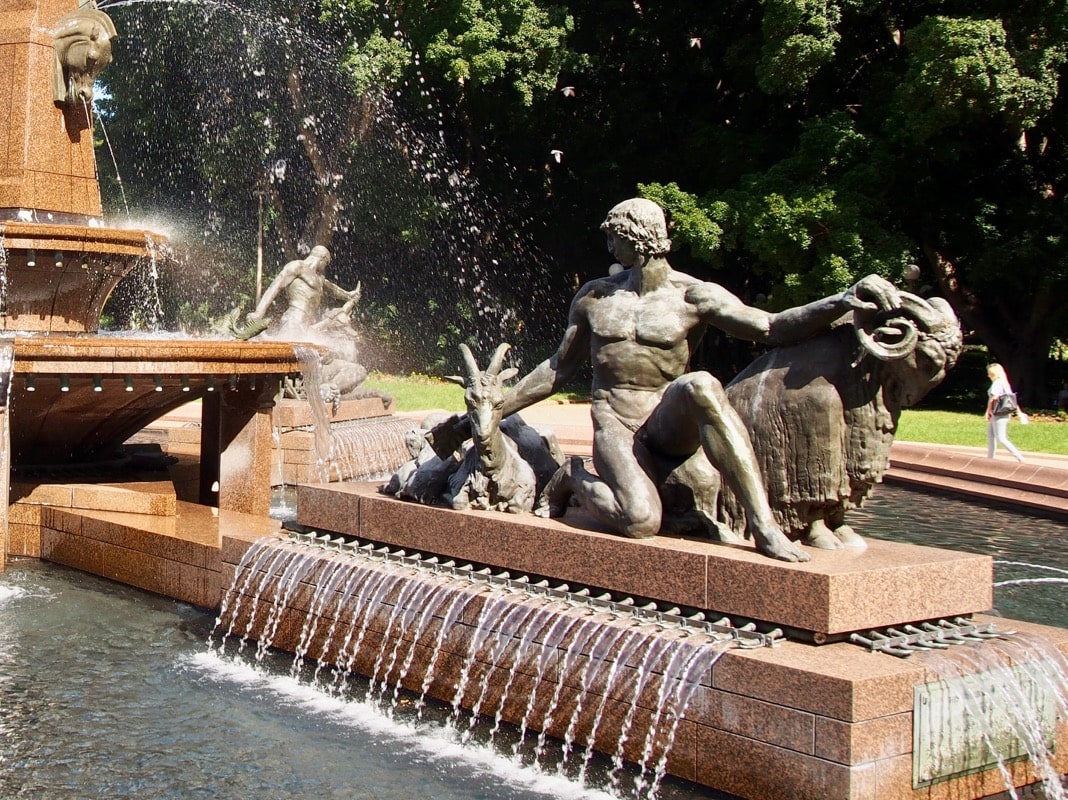
One thing you can be sure of is this: Pan Greek God Symbols and Powers shouldn’t be underestimated.
Apollo Fountain: Greek Myth Structure
The beautiful water fountain showing Apollo in a top center position in Australia doesn’t even come close to matching the fame of the Apollo fountain found at the Palace of Versailles in France.
But maybe one day, this marvelous fountain in Sydney will be just as revered. Let’s hope so anyway because I think it deserves the world’s admiration.
Apollo is the central key figure in the Archibald fountain, which is why I call it the Apollo fountain, as others do.
This picture shows how the three other sculptures form a Y-pattern around Apollo in the large basin.
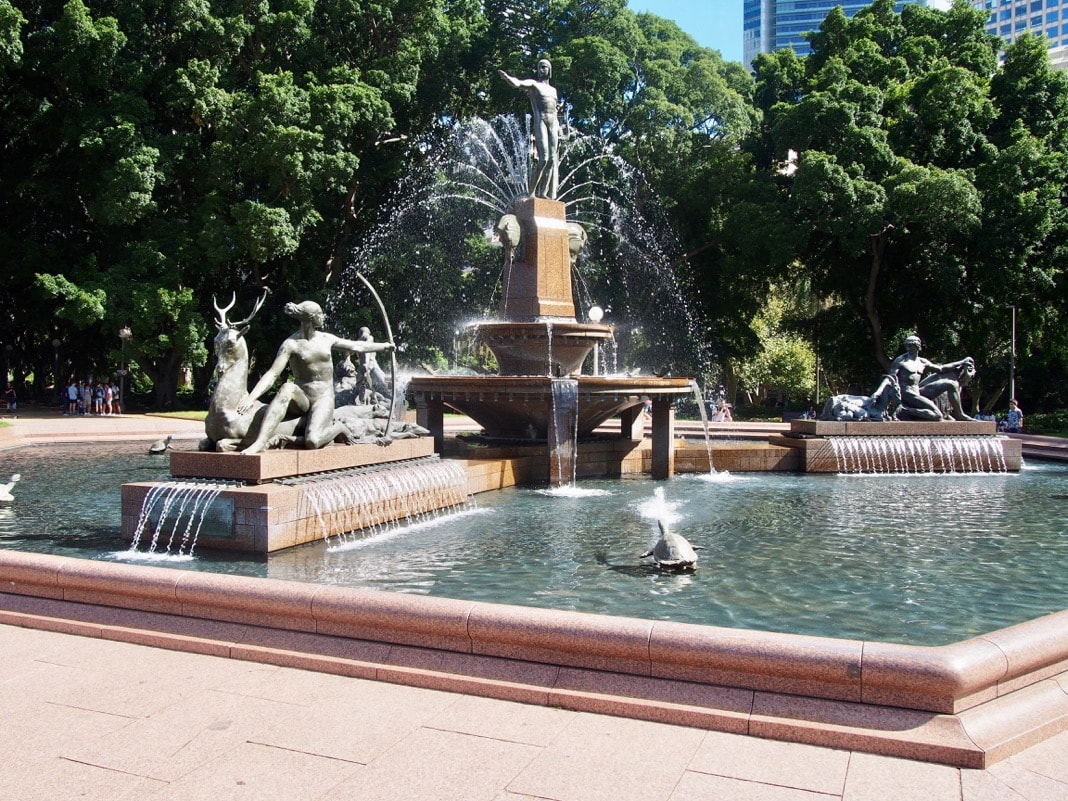
The three sculpture groups include Diana (Artemis), Theseus/Minotaur, and the Pan group of sculptures.
Water spraying out to the side of Apollo in a semi-circle motion represents the rising sun.
Since the water is in the shape of a fan, it could also mean that Apollo has a big fan.
Jules François Archibald is the person who created the water fountain, so he could be saying that he’s a massive fan of Apollo.
Maybe he is trying to tell everyone that the right way is to follow Apollo.
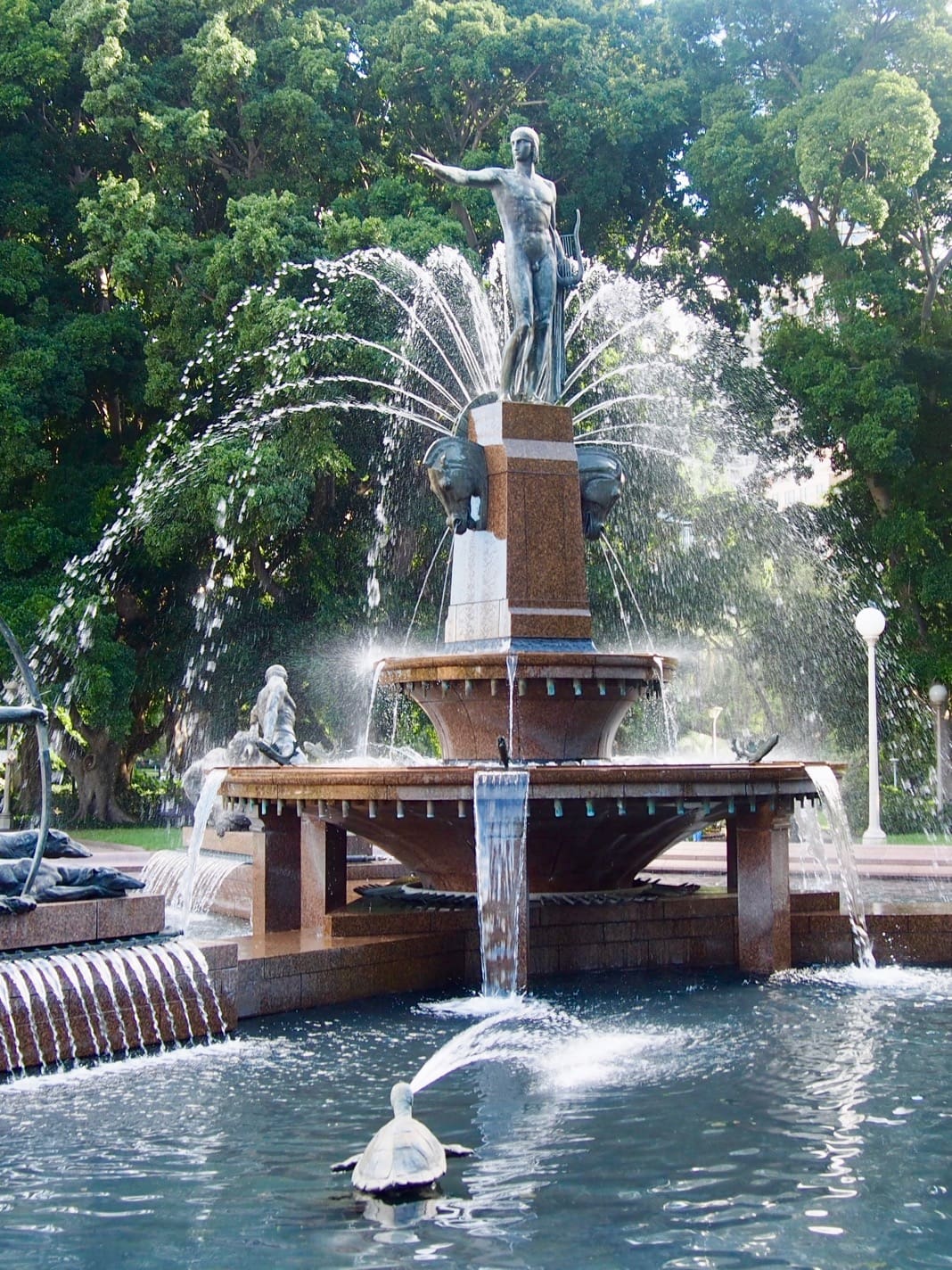
The Archibald Fountain also has six tortoises that spurt water into the fountain. The fountain has a hexagonal shape, so it makes sense.
Apollo’s right hand is outstretched, facing in the direction of St Mary’s Cathedral.
The featured image at the top of this post suggests that all powers are under Apollo. It is all a matter of perspective.
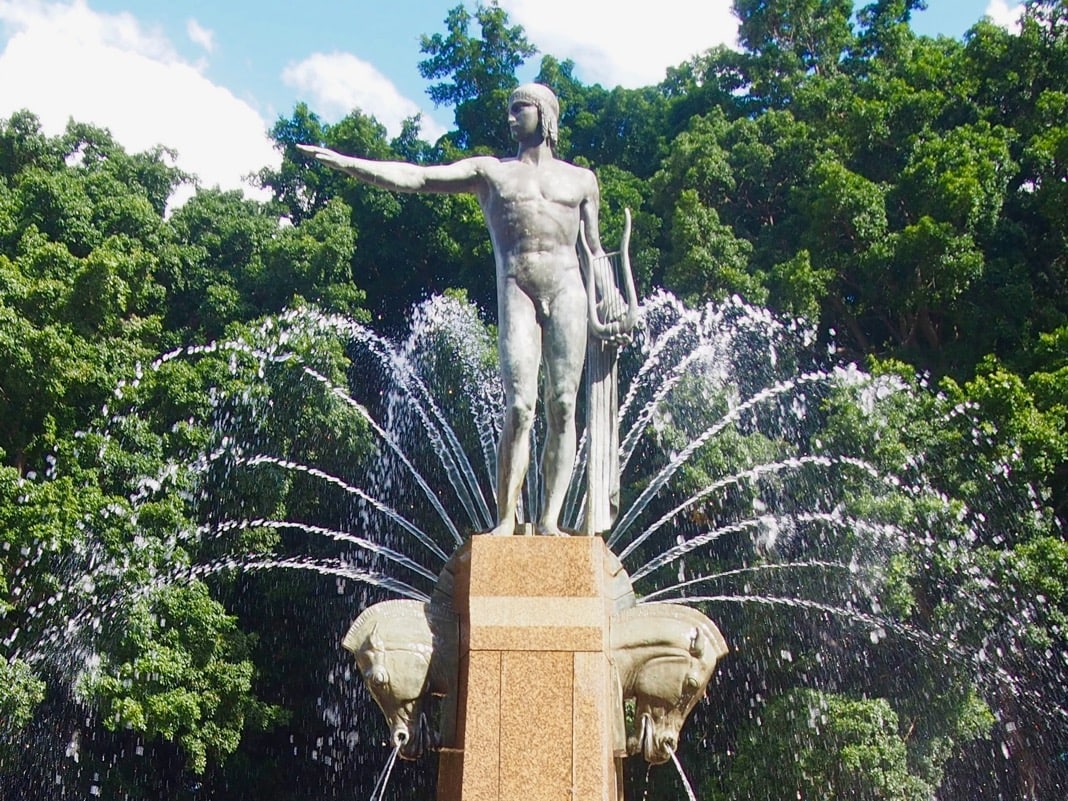
You can also see water jetting out of horses’ nostrils in the Archibald Fountain, a little lower than where Apollo is standing.
The heads of the horse seem to represent the horses of Apollo’s chariot.
The Symbolism of the Archibald Fountain
The Archibald fountain has some very symbolic placements.
For instance, the gap between Theseus and the Minotaur appears to line up directly with the entrance to the doorway to St Mary’s Cathedral.
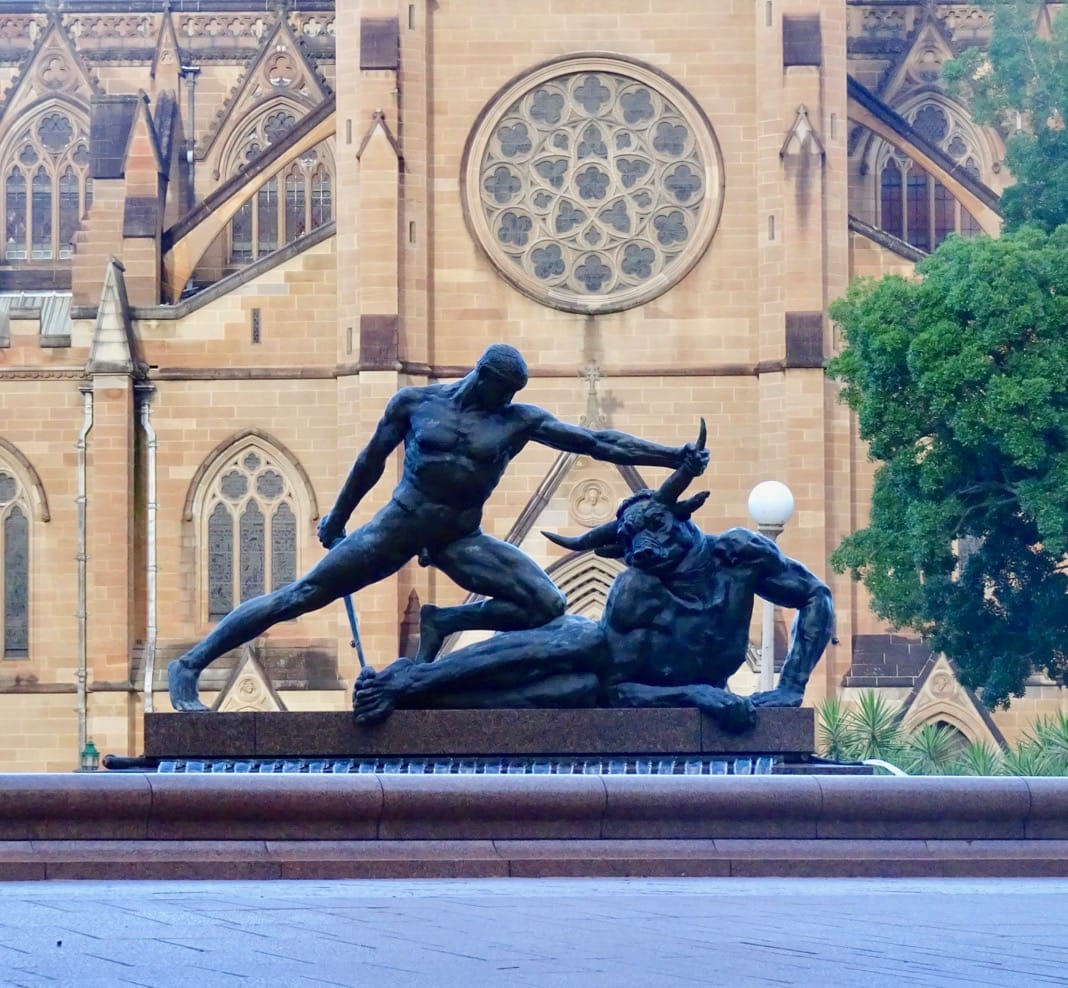
It’s very symbolic in a mysterious kind of way. There seems to be fountain symbolism everywhere you look at the Archibald Fountain.
I was hoping to find a sign of Poseidon (Neptune), God of the sea, in the Archibald Fountain, but no luck. Maybe I missed something.
It would have been incredible if I had noticed a trident symbol somewhere.
There are plenty of Neptune fountains in Italy if you’d like to see some of them.
Sydney also has an impressive water fountain with Neptune (Poseidon) in it.
You can find it at the Royal Botanic Garden. Discover it in my Guide to Sydney.
You will also be able to find a map in the Guide to Sydney showing you the whereabouts of the Archibald Fountain, and more importantly Apollo.
Apollo 11 astronauts visited the Archibald Fountain (Apollo)
Believe it or not, even the Apollo-11 astronauts saw Apollo as part of their world tour.
During an official tour of Sydney, they stopped by at the Archibald Fountain on Saturday, the 1st of November, in 1969.
Nasa and the Greek Gods go way back.
Things to do at the Archibald Fountain, Hyde Park
Sydneysiders love the Archibald Fountain, though it’s still a big secret to the rest of Australia and the world.
The water fountain is in a beautiful spot in Hyde Park within a serene public garden setting.
Plenty of seating is available close to the fountain. You could sit close to the Archibald Fountain and relax for hours if you wanted to.
It’s an excellent place for people-watching in Sydney. People pass through the area all of the time.
You can take some great photos of the Archibald Fountain. Sometimes they even have entertainers in the area.
It’s also a top spot to ponder over the 12 Greek Myths that Prove the Bible is Fake. After all, Apollo is the God of light and truth.
If you get lucky, maybe Apollo will give you a divine sign.
If you’re ever in Sydney, make some time to visit the Archibald Fountain to see Apollo.
Even if it’s only to visit Apollo for five minutes, I’m sure you won’t regret it.
When I think about it more, the Apollo fountain in Sydney has to be one of the best attractions in Sydney. You must go there even if you’re only in Sydney for one day.
If that’s the case, make sure you see the Opera House, Sydney Harbour Bridge, and the Archibald Fountain (Apollo Fountain) — the big three.
Archibald Fountain Location: Accessible from Elizabeth Street, St James Road, and College Street in Hyde Park North – Sydney, Australia
Pin it … Share it



